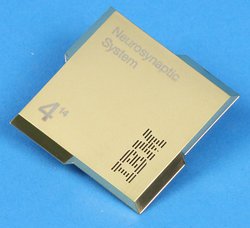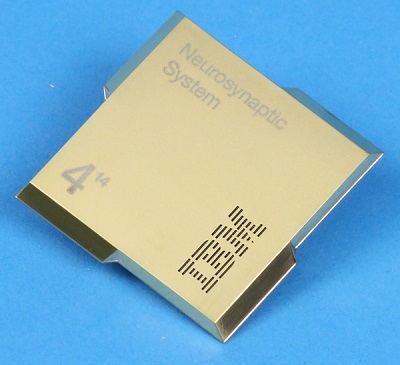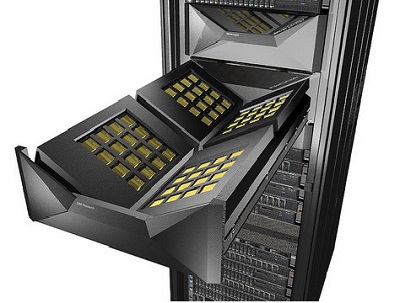
June 26, 2017
By: Michael Feldman
The US Air Force Research Laboratory (AFRL) is working with IBM Research to construct a “brain-inspired supercomputing system” for deep neural network learning and information discovery.
 The project will be based on IBM Research’s TrueNorth neuromorphic chip, which has been under development since 2011. Using standard CMOS technology, the 4096-core processor encapsulates the basic structures of the brain, namely neurons and synapses, in digital form. Unlike conventional von Neumann processors, TrueNorth is event driven, operating only when it needs to. That results in much lower power consumption – on the order of hundreds milliwatts – which makes it highly suited to embedded, mobile, and other power-constrained environments.
The project will be based on IBM Research’s TrueNorth neuromorphic chip, which has been under development since 2011. Using standard CMOS technology, the 4096-core processor encapsulates the basic structures of the brain, namely neurons and synapses, in digital form. Unlike conventional von Neumann processors, TrueNorth is event driven, operating only when it needs to. That results in much lower power consumption – on the order of hundreds milliwatts – which makes it highly suited to embedded, mobile, and other power-constrained environments.
“The TrueNorth chip, with 1 million neurons and 256 million synapses is essentially a supercomputer the size of a postage stamp and the power of a hearing aid battery,” says Dharmendra Modha, IBM Fellow, chief scientist, brain-inspired computing, IBM Research – Almaden.
The idea is that such chips will be especially adept at pattern recognition, which is the principle mechanism the drives most deep learning application. In fact, TrueNorth has already demonstrated its proficiency at inferencing neural networks for things like image and audio recognition. In these earlier tests, not only was the chip much faster at classifying images than inferencing-optimized GPUs, it did so with less power.
For the CIFAR-100 image dataset, TrueNorth was able to achieve “near state-of-the-art accuracy” running at more than 1,500 frames per second. It did this drawing just 200 milliwatts of power, which is orders of more efficient than a conventional chip when inferencing the same neural network.
That level of performance is especially valuable to the Air Force, which operates military systems that must recognize and categorize data from multiple sources (images, video, audio and text) in real time. While some systems are those ground-based, many must operate in aircraft where power and weight are at a premium.
 The system the Air Force has in mind will be comprised of 64 of the TrueNorth chips, providing 64 million neurons and 16 billion synapses. The chip array and supporting componentry will be housed in a 4U chassis, which can to be stacked into a standard rack. That kind of setup is not suitable for something like a drone, but the Air Force Research Lab says it is also investigating embedded and mobile applications where the limiting factors of size, weight and power restrict the type of computing hardware that can be accommodated.
The system the Air Force has in mind will be comprised of 64 of the TrueNorth chips, providing 64 million neurons and 16 billion synapses. The chip array and supporting componentry will be housed in a 4U chassis, which can to be stacked into a standard rack. That kind of setup is not suitable for something like a drone, but the Air Force Research Lab says it is also investigating embedded and mobile applications where the limiting factors of size, weight and power restrict the type of computing hardware that can be accommodated.
“AFRL was the earliest adopter of TrueNorth for converting data into decisions,” said Daniel S. Goddard, director, information directorate, US Air Force Research Lab. “The new neurosynaptic system will be used to enable new computing capabilities important to AFRL’s mission to explore, prototype and demonstrate high-impact, game-changing technologies that enable the Air Force and the nation to maintain its superior technical advantage.”
Besides the Air Force, there are more than 40 universities, government labs, and businesses experimenting with TrueNorth and researching suitable applications.
Images credit: IBM Research
